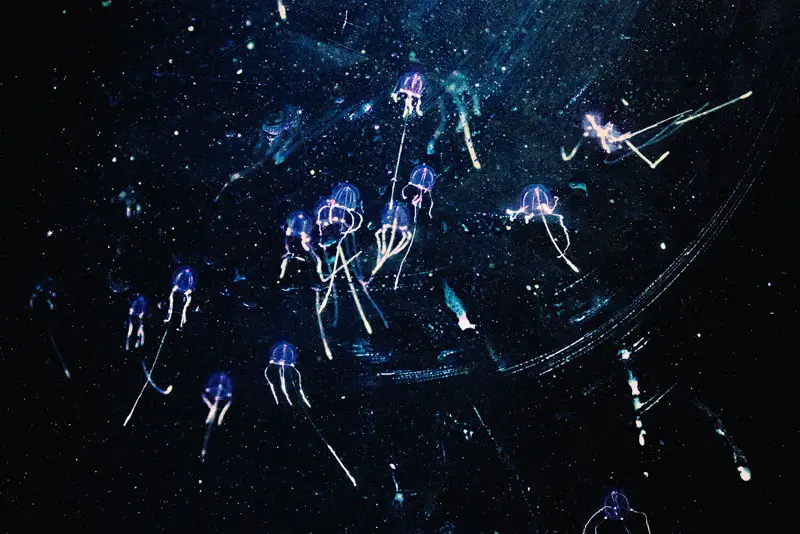Holbox Island is an island in the north of the Yucatan peninsula in Mexico. This island is a natural paradise and is one of my favorite islands in the world. On top of beautiful beaches, crystalline water, sun and authentic Mexican food, you can also experience the rare phenomenon of Bioluminescence on Holbox Island.
Summer and Fall are the best times to witness bioluminescence in Holbox. This natural wonder appears at night and is most easily seen when there is no moonlight. Punta Cocos Beach located at the end of the Holbox Island is the best place to see bioluminescence.
Holbox Island is one of the few places in the world where you can enjoy bioluminescence for yourself. Our article covers all you need to know to ensure that you have a memorable experience.
Where to See Bioluminescence Holbox ?
Holbox Island is a small island with extraordinary white sandy beaches and crystal-clear water. At one end of the island, you will find Punta Cocos Beach which is about half an hour by bike from the centre of Holbox. Punta Cocos Beach is the best place to see bioluminescence on Holbox Island.
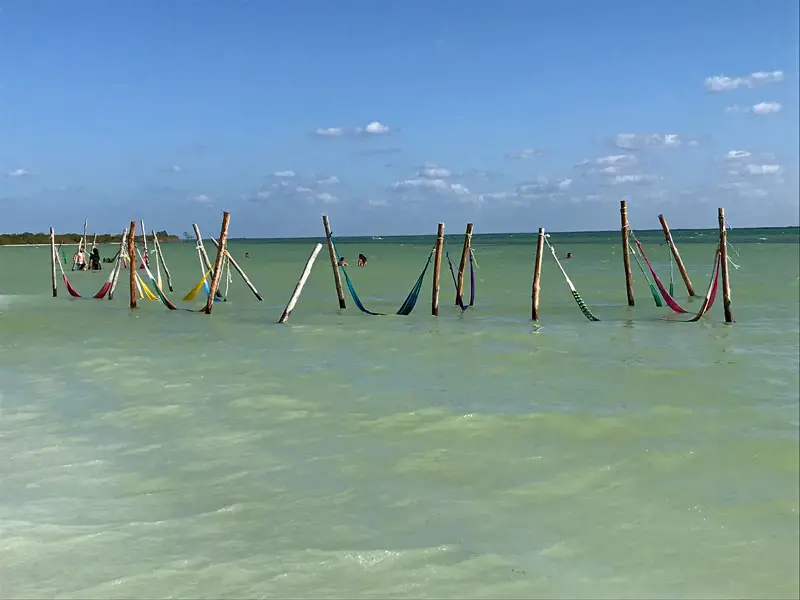
At Punta Cocos Beach, you will also find hammocks dangling in the water. In addition to seeing bioluminescence, this place is a great spot to relax and the best place to see the sunset on Holbox island.
Next to Punta Cocos Beach is also a mangrove where you can spot Flamingos in the evening. Why not enjoy an afternoon at the beach, then watch the Flamingos at twilight, followed by a stunning sunset and bioluminescence at night?
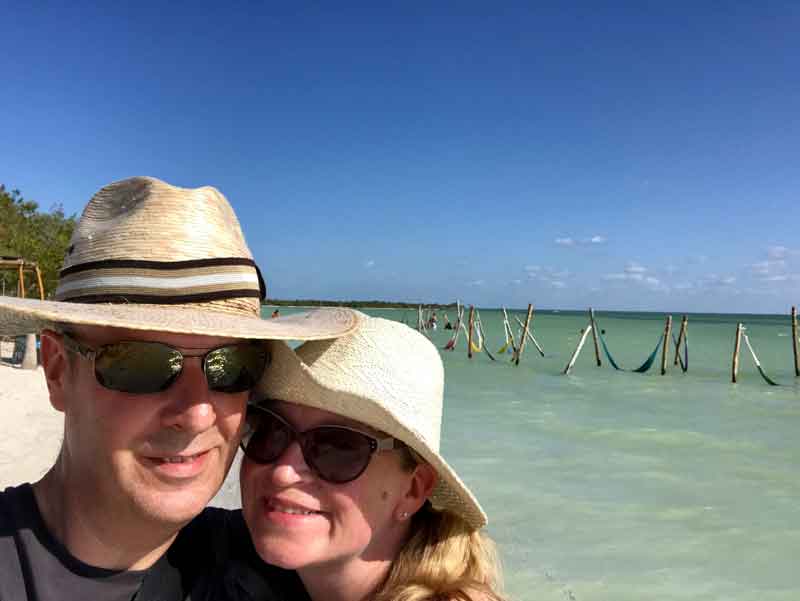
Don’t forget to take a good torch with you when you head out to see the biolumiscence. Remember it will be very dark when you return and there are no street lights. A torch will guide you safely back to your accommodation!
We always take a torch with us when we travel because it proves so useful. We bought this torch on Amazon and we are very pleased with.
Finding the best way to get to Holbox Island can be difficult, so we wrote an article on How to Get to Holbox to help you.
When to See Bioluminescence in Holbox?
The best time to enjoy the bioluminescence in Holbox is during the summer and fall season. It is during this time of year that you will see the most plankton. The shallow water and the clear sand make it an incredible spectacle.
It is possible to see bioluminescence at other times of the year but there is a lot less. To maximize your chances of seeing the bioluminescence, you need to plan your holiday in summertime.
How to see Bioluminescence in Holbox?
Even in summertime, you aren’t guaranteed to see the bioluminescence. To get the best chance of enjoying this phenomenon, follow these top tips:
- Pick a very dark night to see the bioluminscence – This may sound obvious, however, you will not see bioluminescence when there is a full moon as it will be too bright.
- Ask the locals for their advice – Bioluminescence depends on the phases of the moon. Consult a local about the optimum times, as they really are the best guides.
- Pick a night with a new moon – A new moon is perfect to start with because it will be pitch black on the beach.
What is Bioluminescence?
Bioluminescence is light produced by an animal. It is a chemical reaction between Luciferin and Oxygen.
Animals use bioluminescence for different purposes: some use it to attract a mate, some use it as a defense to scare others away and some used it to entice their prey. The bioluminescence color varies according to the arrangement of Luciferin molecules in the animal.
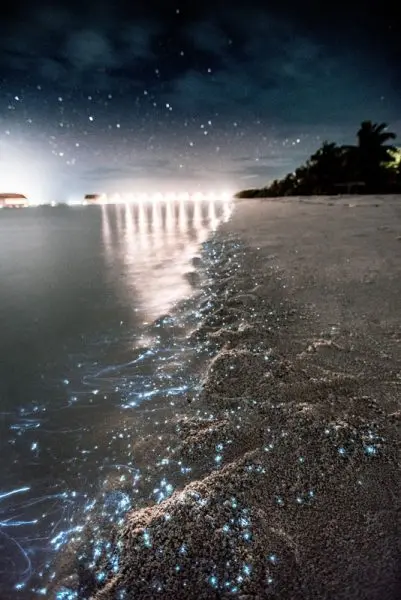
What is the Difference Between Bioluminescent and Biofluorescent?
Bioluminescent refers to the chemical reaction in which an animal may or may not release Luciferin which reacts with Oxygen to produce light.
The animal can control the light because they are able to turn on or off the production of Luciferin. Some females turn the light on when they are ready for a male, whereas others turn it on to attract their prey. In Holbox, it is the plankton which produces this light to protect itself from predators.
In contrast, biofluorescent is a process which cannot be controlled by an animal. The animal becomes fluorescent by absorbing and transferring light. The animal absorbs blue light during its life on the ocean. This light is released all the time without control and produces fluorescence.
How do you Photograph Bioluminescence?
It is amazing to see bioluminescence and fun to put your hands in it, but it is very difficult to capture a great photograph. Remember that it will be dark and you will be walking in the water.
If you want to take a good picture of the bioluminescent plankton, you need to have a good tripod and a camera which you can switch on to manual. Take care when you set up your tripod as the sand isn’t the most stable place.
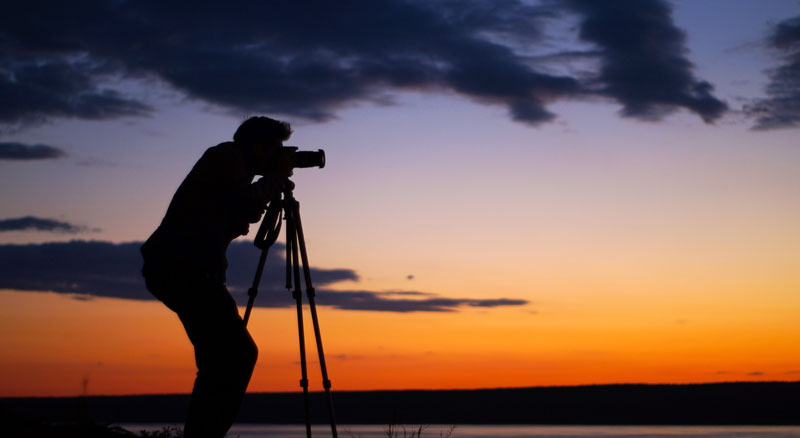
Once you have your camera set to manual and have secured it on your tripod, you need to:
- Choose a high ISO setting;
- Select a wide aperture – the widest you can with your camera.
- Test the exposure time to find the right balance between incoming light and the sea movement. Do some tests in advance before finding the perfect setting.
- Take your photographs in RAW format to give more scope to adjust them afterwards with editing software like Photoshop.
If you don’t have a good camera, I suggest you use a GoPro and take video. The GoPro is very convenient when you are travelling, plus it’s waterproof up to 10 meters in depth. I used my GoPro for diving and the results were very good.
In addition, the GoPro has a time lapse photography feature. If you fix the GoPro just above the surface of the water, you can achieve great results. I have the GoPro 6 but now they are selling the GoPro 10 which is even better. If you are interested, you can check it out for yourself on Amazon.
Why is Bioluminescence Important for Humans?
Bioluminescence is beautiful but it’s also a good indicator of a healthy ocean. Today, bioluminescence is used to detect water pollution. When the water is polluted, the light decreases.
However, humans have always been intrigued by other ways of using bioluminescence. For instance, some tribes used it as a natural torch when they went into the jungle and miners have used it as safe light to avoid explosions.
During World War II, bioluminescence was also used to detect submarines. Did you know that U-boats entering an area of bioluminescence left a clear path behind which enabled the allies to locate enemy submarines?
Today, Scientists continue to be deeply interested in bioluminescence and are exploring its use in green energy and its application in medicine.
What Is the Effect of Climate Change on Bioluminescence?
Inevitably, climate change impacts bioluminescence. Some places where bioluminescence was occurring have disappeared and some new places have been identified, like Mumbai.
In Mumbai, bioluminescence has occurred for a simple reason. The rise in sea temperature has brought plankton to the surface but unfortunately this plankton is harmful to fish.
The plankton has created waves of bioluminescence in Mumbai, but they aren’t a sign of a healthy ocean. Fish are dying because they are competing for food and the plankton is harmful for them. This phenomenon has also been observed in China and Hong Kong.
Where Else Can You See Bioluminescence Around the World?
If you have travelled around the world, you may have had the opportunity to see bioluminescence in other areas. The best places to see bioluminescence around the globe are:
- The Maldives – bioluminescence created by shrimps.
- San Diego Mission Bay – bioluminescence created by algae.
- Cambodia Koh Rong – bioluminescence created by plankton (like Holbox).
- Puerto Rico, Puerto Mosquito – bioluminescence created by dinoflagellates.

